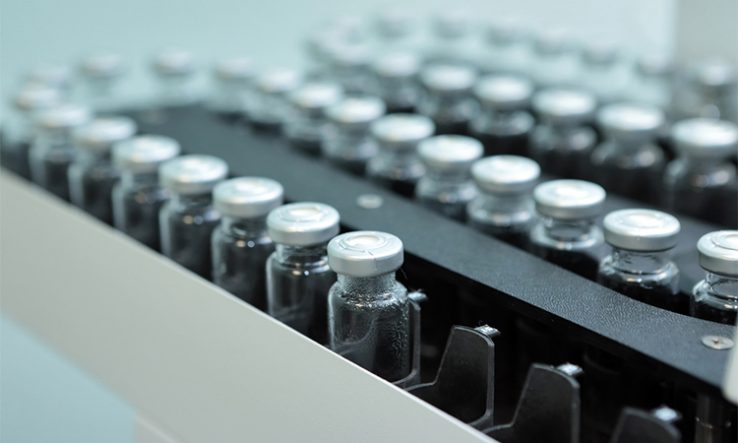
Manufacturing capacity, not scientific knowledge, is the major bar to a vaccine, says Ian Jones
Covid-19 is not virus X, the mythical infection that emerges from the shadows and sweeps through the population, decimating as it goes. But it is nasty, up there with a very bad flu year, with a stubborn case-fatality rate of around 1 per cent that is worrisome and well ahead of any current seasonal infection.
No-one would disagree it deserves a vaccine. Why then is it proving so hard to make one, and to make it quickly?
Unlike some viral diseases, HIV and HCV being classic examples, the requirements for a vaccine for most coronaviruses are well known. Exposure to a large protein on the surface of the virus, the spike or S protein, is sufficient to generate antibodies that head off infection.
The virus behind Covid-19 enters human cells via the same receptor molecule targeted by the closely related SARS virus. More than a decade of SARS research has shown that the fragment of the S protein that binds to this receptor works as well as, if not better than, the complete protein as a vaccine. As a smaller molecule, it is also easier to make and store.
So the issue for immunising against Covid-19 is not biological knowledge or vaccine design. What’s impeding vaccine delivery is a lack of manufacturing capacity.
Ready to go
The vaccines we typically receive as children are live, weakened forms of the infectious agent itself. Diligence is required to ensure that every batch is safe and effective. Turning production of these vaccines on and off is not easy, and it takes time to shift production to a new variant.
More recently developed vaccines, such as the shingles vaccine Shingvax, move away from the live organisms and focus instead on single components of the virus. These vaccines are manufactured through technologies that can be turned on and off much more easily.
A Covid-19 vaccine based on all or part of the S protein would fit these technologies very well and could be made quickly and at scale. In fact, viral material is already available: lab-made viral S protein was being advertised on commercial websites within four weeks of the virus’s genetic sequence being released.
Such material is sold for research use, but its prompt availability shows that producing a vaccine using material of this type would be straightforward. But several stumbling blocks are delaying a generally available vaccine.
One issue is the need to comply with regulatory guidelines and manufacturing standards. Facilities capable of producing material of the necessary purity and consistency are expensive to set up and maintain. Most belong to large pharmaceutical companies, which repay their investment by keeping them in constant use.
Accessing such facilities means interrupting whatever was already in production, which might not be agreeable to the company concerned. Moreover, as pharma companies have merged over the years, multiple smaller facilities have given way to a few large facilities scattered across the globe.
Time to act
In a crisis, the nations that host such sites will want their own needs met before exporting vaccine supplies abroad. Countries lacking such manufacturing options will find themselves at the back of the queue for the vaccine.
Some countries still have state serum institutes with a mission to protect against infectious disease; making vaccines is one of their roles. But in the UK these are long gone.
There have been recent initiatives to fill the gap, but they are not yet up and running. Their remit is also to produce trial batches of experimental vaccines, rather than large-scale manufacturing.
All of which leaves production of high-quality coronavirus S protein, which could undoubtedly be put to use right now, nowhere.
It is pie in the sky to suppose that we can be perfectly prepared for every eventuality. But what is galling is that years of research, most of it publicly funded, has told us what to do and provided the tools and technologies to do it. Yet some combination of the established and the sacrosanct prevents us taking the situation by the throat.
I am not suggesting shooting anyone’s arm full of half-tested biochemicals—that is just not the case for Covid-19—or moving away from the principle that medicine should do no harm. But what if this were virus X; what if the fatality rate were 10 per cent or 20 per cent?
Wouldn’t half the facilities across the globe that might currently be cranking out S protein be commandeered for immediate use? And if then, why not now?
Ian Jones is professor of virology at the University of Reading
A version of this article also appeared in Research Fortnight